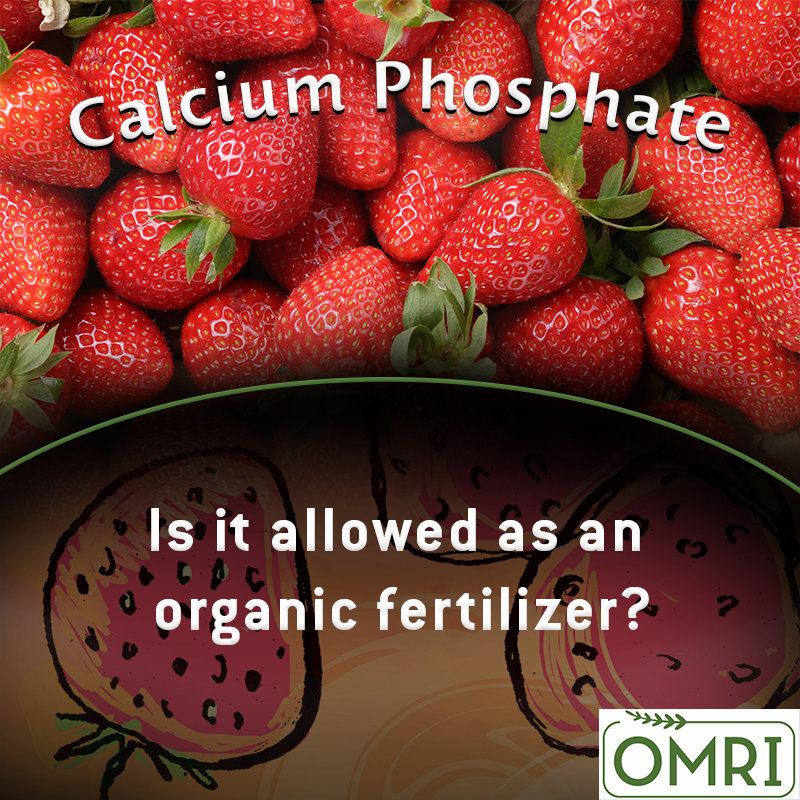Calcium Phosphate
 Are all calcium phosphate fertilizers allowed in organic production?
Are all calcium phosphate fertilizers allowed in organic production?
By Brian Baker
No, calcium phosphate’s allowance in organic farming depends on its source and manufacturing. Calcium phosphate comes in mono-, di- and tricalcium forms. Tricalcium phosphate is usually natural and allowed when derived from phosphate rock or bone meal.
Most rock phosphate on the market is in the form of tricalcium phosphate and comes from apatite or bone ash. However, tricalcium phosphate is sometimes synthesized. Synthetic calcium phosphate is not allowed as a fertilizer in organic production. The specific amount of tricalcium phosphate in a given material is sometimes expressed as bone phosphate of lime, or BPL. Rock phosphates are variable in phosphate content, containing anywhere from 15% (or less) to 36% total phosphate (P2O5) with less than three percent available in a given year.
Another form of mined calcium phosphate is colloidal or “soft” rock phosphate. This form of calcium phosphate contains approximately 20% phosphorous and 15% calcium, as well as carbonates and clay (which contains aluminum). Colloidal phosphate is released at a rate of about 2% per year.
Growers should be aware that rock phosphates can have a high level of impurities as well. Of particular concern are cadmium, radon and fluorine.
Dicalcium phosphate is usually synthetic, but there are some small, limited deposits from natural sources, such as monetite. Dicalcium phosphate might be obtained from roasting bones, but most bone sources of dicalcium phosphate are precipitated by using strong acids prohibited for organic production.
Besides bones, bird and bat guano are another biological source of calcium phosphates. Aged guanos may contain as much as 12% P2O5 with over 30% calcium. Depending on the age, the phosphate may be more soluble than rock phosphate. Fossilized guano, however, has similar solubility as rock phosphate.
Monocalcium phosphate is always synthetic and prohibited in organic production. Examples include superphosphate, which is produced by treating rock phosphate with sulfuric acid. It can be reacted further it with phosphoric acid, producing triple superphosphate.
This article was originally published in the spring 2008 edition of the OMRI Materials Review newsletter, and was updated in August 2021 by Senior Technical Coordinator Peter Bungum.








